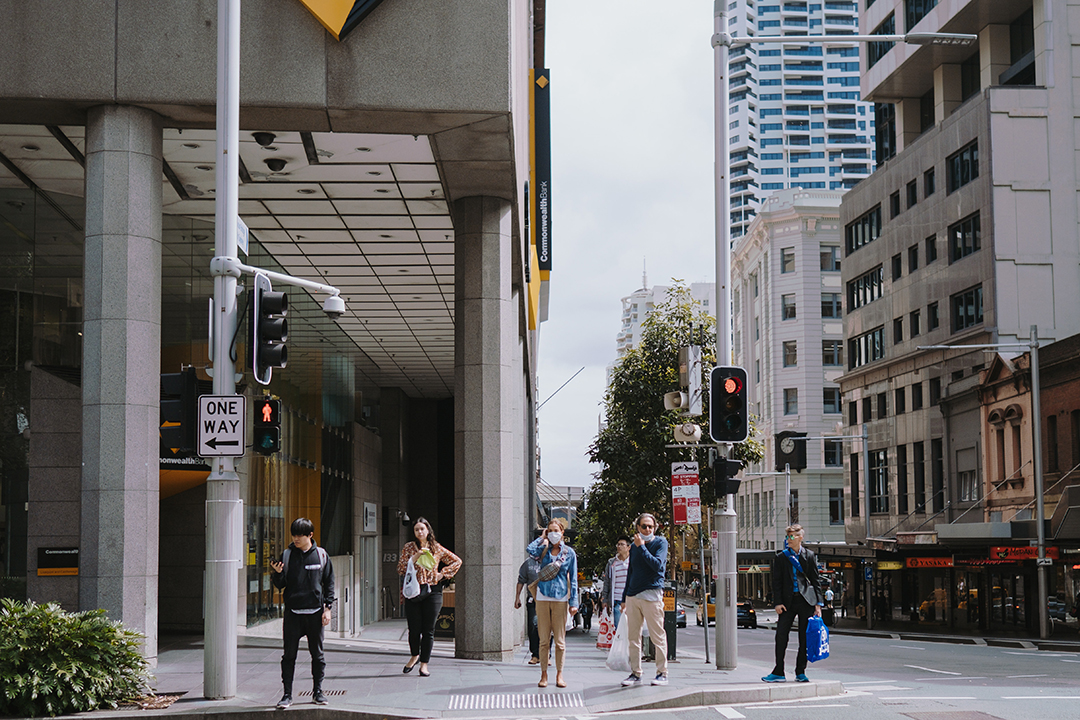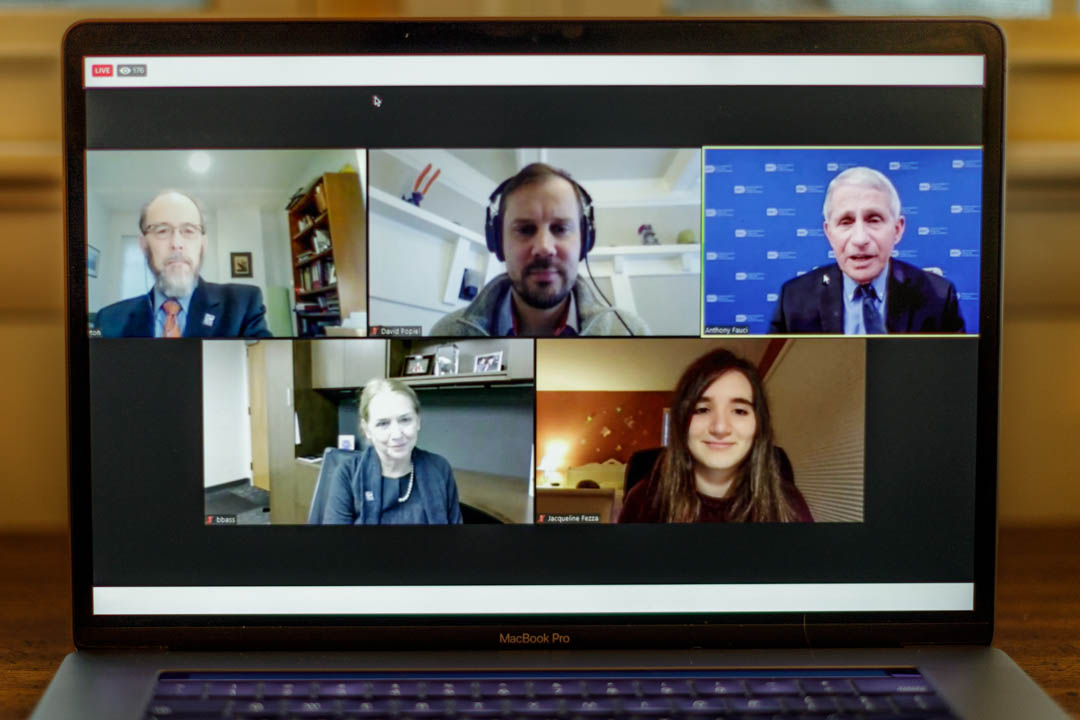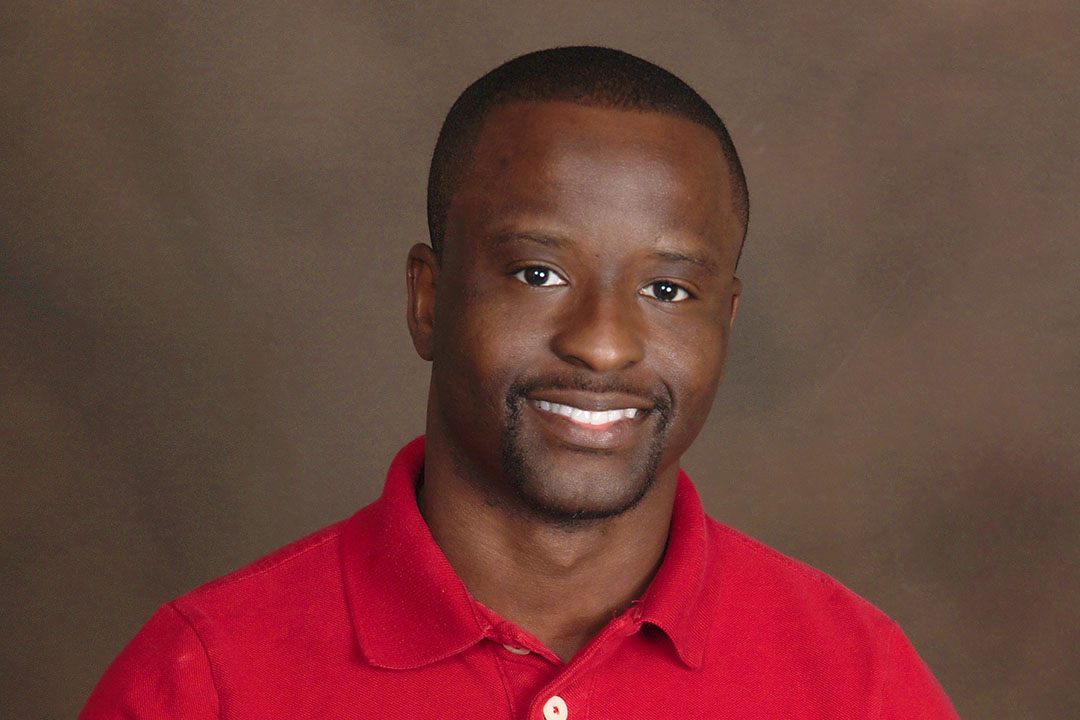By Kristen Mitchell
Masks and physical distancing play a critical role in efforts to fight the spread of the virus that causes COVID-19, yet across the country, compliance with masking and physical distancing has been inconsistent. George Washington University Milken Institute School of Public Health students are working as citizen scientists on a new national project that seeks to document adherence to public health guidelines.
The project, called Systematic Observation of Mask Adherence and Distancing, or SOMAD, was launched by the Kaiser Permanente and the RAND Corporation. To help find out more about adherence to these safety measures, the project relies on citizen scientists to observe mask-wearing and physical distancing behaviors in their own communities and submit the data.
Twice a week, public health students collect on-site observations of people in various locations around the United States— including commercial strips, neighborhoods, parks, play areas and walking paths. Students observe whether individuals are complying with Centers for Disease Control and Prevention guidelines for mask wearing and document what they see. The data will ultimately go into the large SOMAD database, along with observations from citizen scientists across the United States. That information will be analyzed to help public health officials figure out how many people in a given community are following these safety precautions.
Monica Ruiz, Milken Institute SPH associate professor and an adviser on the research project, and Amita Vyas, director of the GW Center of Excellence in Maternal and Child Health, work closely with students participating in this project. The study gives students a “taste of field researching” and firsthand experience doing data collection and reporting, Dr. Vyas said.
“Public health students want to be part of the fight against COVID-19,” she said. “This is a meaningful and tangible way for them to collect important data on life saving behaviors.”
First-year Milken Institute SPH graduate student Jackie Carlton collects data near a busy storefront in Old Town, a neighborhood in Alexandria, Va. While her observations have not yet been analyzed, she’s observed lower mask compliance on the weekends while people are engaging in leisure activities in larger groups, particularly among young adults, compared to individuals who visit during the work week.
Ms. Carlton got involved with the study in December after taking a course with Dr. Ruiz. She previously worked in hospice care and saw the toll of COVID-19 firsthand. Ms. Carlton is interested in public health literacy and understanding how to best communicate information in order to effectively reach various populations.
“Before we start any media campaigns that are targeted toward a certain demographic, before we start providing health education, we really need to understand where these different demographics of the population are coming from,” she said. “How can we increase masking and social distance until we’re able to get the vaccination out there, and once we are able to roll out the vaccines to a larger percentage of the population...how do we increase their trust and their adherence to these often confusing policies.”
Agnes Halm-Lutterodt, a second-year graduate student, has been taking classes remotely from Georgia this academic year. She collects data near a commercial location in Lawrenceville, about an hour outside Atlanta. She noticed mask compliance increased recently when a local store put up new signage encouraging mask use at the entrance.
“I thought that was interesting because it was an indication to me that people do respond to the efforts put in place to improve mask wearing,” she said.
Ms. Halm-Lutterodt said it has been an exciting experience to contribute to COVID-19 research that could ultimately be used to inform public health policies. It has also been a fulfilling way to connect with faculty and peers during virtual learning.
GW students will continue their observations through the spring.
In an early analysis of SOMAD data collected by citizen scientists in Philadelphia, researchers found that less than half of Philadelphia residents were wearing masks properly when outside. The early results indicated that 43% of people wore masks correctly when out and about, 40% wore no masks and 17% wore masks incorrectly.
Such information can be crucial for public health officials trying to combat the pandemic and get more people to wear masks properly and stay six feet apart.





